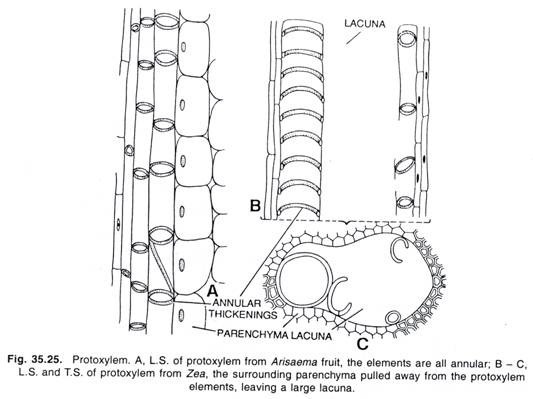ADVERTISEMENTS:
In this article we will discuss about the definition and groups of tonsil which are found in human body with the help of suitable diagrams.
Definition of Tonsil:
There is accumulation of lymphoid tissue in the mucous membrane at the root of the tongue and at the surrounding of the pharynx, where nasal and oral passages unite, this lymphoid tissue is invaginated by the surface-stratified epithelium and are easily seen as well-defined organs which are known as tonsils. They do not possess afferent lymphatic vessels. The lymph nodes remain scattered throughout the tonsil.
Important Identifying Point of Tonsil:
ADVERTISEMENTS:
i. The arrangement of the lymphoid nodules.
ii. The absence of cortex and medulla.
iii. The presence of crypts on the surface.
iv. The covering of stratified epithelium-are very important identifying features of tonsil.
Groups of Tonsils:
ADVERTISEMENTS:
Usually tonsils can be divided into three groups:
(a) Palatine tonsils,
(b) Lingual tonsil, and
(c) Median nasopharyngeal tonsils in the posterior wall of the nasopharynx (Fig. 1.41).
(a) Palatine Tonsil:
The palatine (faucial) tonsils (Fig. 1.42) are paired oval masses of lymphoid tissue which are covered by stratified squamous epithelium lying on the tunica propria of connective tissue. The surface of the tonsil has got numerous deep furrows which are known as crypts. The crypts (pits) are lined by stratified epithelium. Ducts of mucous glands sometimes open in the crypts.
The tonsilar substances are constituted with diffuse lymphoid tissue containing numerous lymph nodules. Most of the lymph nodules possess germinal centres which give rise to lymphocyte. Micro-organisms may accumulate in the lumen of crypts causing inflammation to the tonsil.
(b) Lingual Tonsil:
ADVERTISEMENTS:
This is situated at the root of the tongue behind the circumvallate papillae. There are wide-mouthed crypts which are surrounded by the lymphoid tissue. Each crypt is lined by stratified squamous epithelium.
Like the palatine tonsil, the lymphoid tissue contains lymph nodules with germinal centres and ducts of numerous mucous glands open on the surface or into the crypts. The secretion of which washes away micro-organism causing this variety of tonsil less labile to infection.
(c) Pharyngeal Tonsils (Fig. 1.43):
ADVERTISEMENTS:
These are two large lymphoid collections, one on each side, in the median posterior wall of the nasopharynx. On their outer surface (i.e., pharyngeal surface) they are covered by stratified epithelium which is continuous with the mucous membrane of the pharynx. The pharyngeal surface of the tonsil is pierced by many tonnels known as the crypts, which are also lined by projections of the same stratified epithelium.
In the lumen of these crypts, ducts of numerous mucous glands open. Unlike the lymphatic gland, the tonsils do not show any separation into cortex and medulla. The lymphoid cells remain both in the scattered form as well as in the form of dense islands like the lymphoid nodules in the lymph nodes.
Pharyngeal tonsils are often hypertrophied causing obstruction to the nasal openings. The hypertrophied tonsil is chemically known as adenoid.
ADVERTISEMENTS:
Tubal Tonsil:
It lies around the pharyngeal orifice of the pharyngo- tympanic tube. It is the lateral extension of the pharyngeal tonsil and is covered with ciliated columnar epithelium.
The vermiform appendix is also very rich in lymphoid tissue and is hence known as abdominal tonsil. Besides these, the bursae, the synovial membranes, the serous and mucous membranes, the adipose tissue, the bone marrow and the perivascular spaces – all contain lymphoid tissues.
Functions:
ADVERTISEMENTS:
i. To supply lymphocytes to the blood and lymph stream, as evidenced from the presence of mitotic figures in the organ.
ii. To serve as a great defence against bacterial infection.
iii. To serve other functions of the reticulo-endothelial system.



